HIGHLIGHTS

U.S. Leads
in Global Fisheries Management
In his new message, John
Henderschedt, Director of NOAA Fisheries’ Office of International Affairs and
Seafood Inspection, explains that as global leaders in fisheries management,
the United States has the opportunity and the responsibility to advance
sustainable conservation and management practices on the high seas. Read more
about NOAA Fisheries’ international engagement.
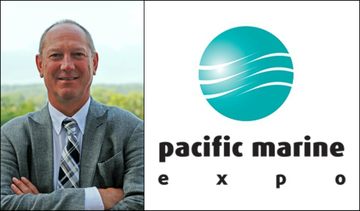
Tomorrow:
Join Chris Oliver at Pacific Marine Expo
Each year, NOAA Fisheries,
Weather, Charting, and Enforcement hold a joint exhibition at the Pacific
Marine Expo to engage with stakeholders and update them on the science and
services they depend on. This year’s Expo features Assistant Administrator for
Fisheries Chris Oliver as the keynote speaker. Please stop by the NOAA booth,
#715, any time after 1 pm this Thursday, November 16, to visit with Chris. Catch his keynote remarks at 3:15 pm.

Federal
Climate Science Report for U.S. Released
U.S. Global Climate Research
Program’s Climate Science Special Report, which serves as Volume I of the
Fourth National Climate Assessment, describes current trends in the climate
globally and for the United States. It projects trends in temperature,
precipitation, sea-level rise, and Arctic sea ice for the remainder of this
century.

Advancing
Progress in NOAA’s Habitat Focus Areas
NOAA’s network of Habitat Focus
Areas tackle a wide range of habitat issues, including reducing
sediment and nutrient runoff, improving coral health, restoring salmon habitat,
and preventing the spread of invasive species. Look back at several completed
and ongoing keystone projects in Habitat Focus Areas in 2017.
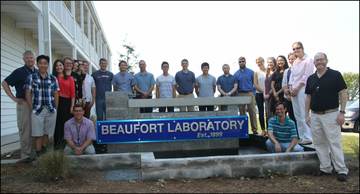
2018 NOAA Fisheries-Sea Grant Joint Fellowship
NOAA Fisheries and NOAA’s
National Sea Grant College Program are partnering again to support the NOAA
Fisheries–Sea Grant Joint Fellowship Program. Two federal funding opportunities
are now open for graduate students pursuing doctoral degrees in population and
ecosystem dynamics or marine resource economics in 2018.
Alaska
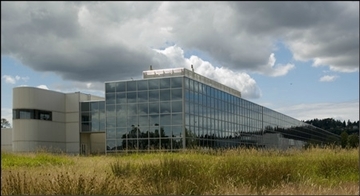
NOAA Seeks
Alaska Science and Research Director
NOAA seeks applications for the
position of Science and Research Director, Alaska Region, to be based at the
Alaska Fisheries Science Center. The director is responsible for research
programs located in four laboratories and facilities dispersed in Washington
and Alaska. Applications are due January
22.
West Coast
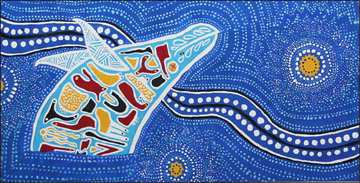 Honorable Mention winner in 2016 NOAA Day student art contest
NOAA Joins
Aquarium of the Pacific for NOAA Day
Several NOAA offices will join
the Aquarium of the Pacific in Long Beach, California, for its annual “NOAA
Day” event this Saturday, November
18. Aquarium visitors can learn more about
NOAA Fisheries' roles regarding marine mammals, marine debris, protected species,
habitat restoration, aquaculture, and sustainable seafood. NOAA’s National
Ocean Service, NOAA Corps, National Weather Service, Sea Grant, and the Channel
Islands National Marine Sanctuary will also participate.

Removing Sea
Lions to Protect Salmon – Open for Public Comment
By January 8, please submit
your comments on an application from the
Oregon Department of Fish and Wildlife to remove, by lethal means if necessary,
California sea lions preying on endangered and threatened salmon and steelhead
at Willamette Falls on the Willamette River. The approach would be similar to
ongoing sea lion management at Bonneville Dam on the Columbia River. NOAA
Fisheries also seeks nominations for a Pinniped-Fishery Interaction Task Force.
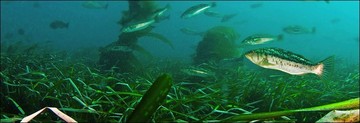
A San Francisco Bay Area Spill, 10 Years Later
Though a decade has passed since
the M/V Cosco Busan oil spill,
restoration efforts continue in the San Francisco Bay area. Nearly $20 million
has been allocated for more than 50 projects to restore impacted habitats,
wildlife, and public recreation opportunities. In this fifth story in a series,
read about efforts to restore eelgrass and rockweed.
Pacific Islands
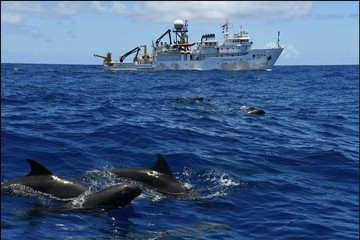
High Tech on
the High Seas
The Hawaiian Islands Cetacean and
Ecosystem Assessment Survey is a 6-month mission to survey whales, dolphins,
and seabirds around the Hawaiian archipelago. The study area spans roughly 1.8
million square nautical miles. To find dolphins and whales in such a vast
region, NOAA scientists use a range of new technologies.
Southeast

Assessing Hurricane Damage to Coral Reefs
NOAA scientists and partners
joined together to conduct a rapid assessment of the Florida Coral Reef
Tract—which includes areas in Florida Keys National Marine Sanctuary—following
Hurricane Irma. Preliminary observations found heavy sediment accumulation,
which can smother corals, as well as structural damage. This is the first step
in a longer recovery process and will help NOAA plan future restoration
activities.
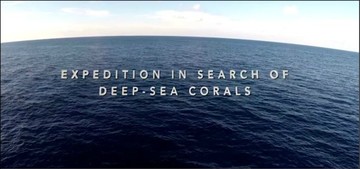
Living in
the Dark: A Deep-Sea Coral Expedition
In August, NOAA’s National
Centers for Coastal Ocean Science led an 18-day expedition on board NOAA Ship Nancy Foster, titled Southeast Deep
Coral Initiative: Exploring Deep-Sea Coral Ecosystems off the Southeast United
States. Learn more about the initiative in this video, featuring footage from
the first leg of the mission.
Greater Atlantic
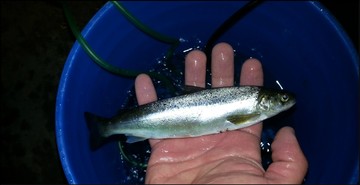
Understanding
Atlantic Salmon Smolt Behavior
Improvements in acoustic
telemetry—the use of transmitters and receivers to track animals—are helping
scientists from the Northeast Fisheries Science Center’s Orono Lab answer
questions about Atlantic salmon smolt behavior and survival. Sharing data across
a growing network of receivers operated by partner institutions and agencies
expands the areas where the smolt may be detected.
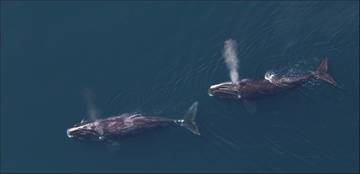
Passive
Acoustics Track Right Whale Shifts
A new study used passive acoustic
monitoring—bottom-mounted listening devices deployed along the coast—to gain
new insight into North Atlantic right whale migrations. The study found that
right whales inhabit nearly the entire eastern seaboard during the winter
months, and they move around a lot more than researchers previously thought.
The length of time they spend in certain areas has changed in recent years.
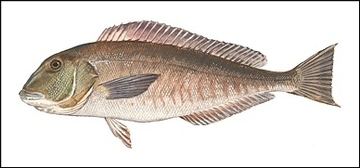
Blueline
Tilefish Amendment for the Mid-Atlantic
Blueline tilefish have been
managed for many years under the South Atlantic Fishery Management Council’s
Snapper Grouper Fishery Management Plan, which applies only south of the
Virginia/North Carolina border. Now, a final amendment to the Mid-Atlantic
Fishery Management Council’s Tilefish Fishery Management Plan will establish
measures for blueline tilefish north of this border.
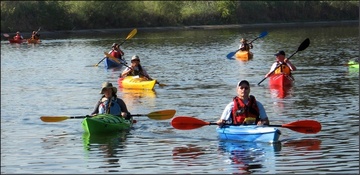
Polluted River Now a Recreation Destination
The Rouge River has come a long
way since its 1987 designation as an EPA Area of Concern. Formerly on the
nation’s “Top 10” most-polluted rivers, today, the Rouge is a popular
destination for river recreation. With the successful conclusion of a dam
removal project in Wayne, Michigan, NOAA and partners have moved the river one step
closer to shedding its Area of Concern designation.
|